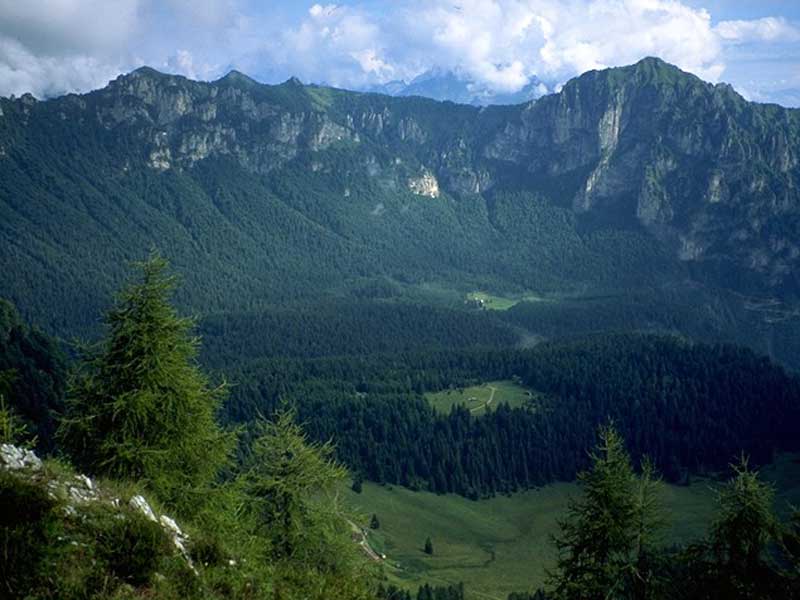Caiada Valley
Access: From Faè by car to Pian de le Stele, then on foot along small roads and trails up to Palughet (trail no. 509)
An atypical valley, maybe originating from a big ancient landslide
Caiada Valley, known for the quality and extension of its forest environments, distinguishes itself for the particular and enigmatic (considering its origins) amphitheater-like shape. The big woody valley, suspended over the upper Val Desedan, is surrounded by a circle of mountains (Cimon, Cime di Caiada, Cirvoi) the foot of which is covered with woody detritus formations. On the large undulating bottom (glacial deposits and, locally, torrential deposits) several small watercourses converge, partly dissolving for infiltration (and re-emerging more downstream, giving birth to torrent Desedan), partly forming marshes (Palughet wetland). Pian Cajada is a basin with a complex morphogenesis. According to recent studies (L.Salti, 1997), its formation could be linked to an imposing paleo-landslide which detached from the Cime di Cajada in a stage of partial glacial withdrawal during the latest glaciation (about 25 – 30,000 years ago), filling in and entirely obstructing the head of Val Desedan. Later, during the latest glacial expansion, the surface of the landslide was smoothed in its morphological aspects by a creeping glacial tongue of the big Piave glacier. The giant landslide accumulation (substratum of the basin) has stabilized, except in its eastern side, interested by a big landslide-erosive phenomenon (Le Roe).








